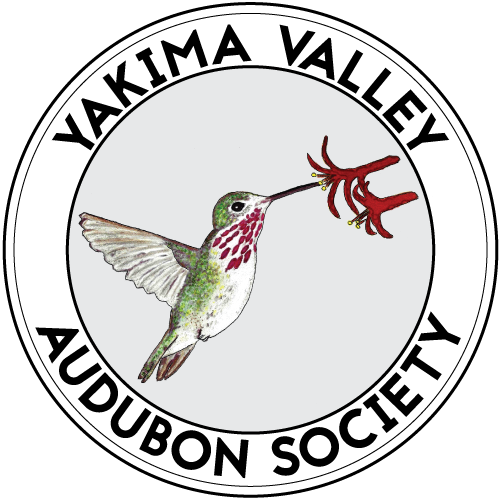Washington State is a Winner in Public-lands Bill Passed by Congress
General ·President Donald Trump signed on March 12 a landmark public lands bill with huge implications for national land acquisition for conservation, as well as for Washington state issues and projects. Every member of the Washington delegation in the U.S. House of Representatives passed this wide-ranging bill. Important for land acquisition of priority lands for permanent conservation protection and promotion of outdoor recreational projects, the bill permanently reauthorizes the Land and Water Conservation Fund (LWCF). Washington Sen. Henry M. ‘Scoop’ Jackson, a legendary figure in Washington state conservation, sponsored this legislation in 1964. Using no taxpayer money, the LWCF has directed a portion of revenues from offshore federal oil and gas royalties to federal, state and local park projects and land acquisitions throughout the United States. In recent years upwards of $ 900 million in offshore royalties has been deposited in the fund, though only $ 300 million or so has typically gone to LWCF projects, the remained siphoned off to other federal projects. In Washington state alone, over $ 600 million dollars of LWCF monies has been invested in conservation and outdoor recreation projects (see http://projects.invw.org/data/lwcf/grants-wa.html). In recent years, the LWCF, which has required congressional reauthorization, has become a political football, as some politicians against federal land acquisition, have made vigorous attempts to stymie renewal of the fund. ‘People still wanted to take a whack at it,’ Washington Senator Cantwell, D-Wash., said, in a recent Seattle rally in support of the LWCF. ‘There’s nothing better than being outdoors. It’s such an important part of our Northwest culture. Fighting to preserve this tool has been a great honor.’
The Oak Creek Wildlife Area is just one of many sites in Washington to receive LWCF grants. Photo by WDFW. The bill includes measures sought by lawmakers all across the United States to further local “pet projects.” This may be an indication that to reach broad consensus in Washington, D.C. “the sausage-making requires a serving or two of locally sourced pork.”
The bill was an “omnibus” bill, a patchwork of previously pitched bills from both Republicans and Democrats. It was stitched together in the Senate by Cantwell and Sen. Lisa Murkowski, R-Alaska, in consultation with House leaders. It passed in both chambers in early March. Support from the House was resounding affirmation of bipartisan support of the legislation. Washington’s Kim Schrier, D-Issaquah, and Dan Newhouse, R-Sunnyside, both encouraged colleagues to approve the legislation and each touted a major Washington state project in the bill, the Yakima Basin Integrated Project, as ‘a model’ on water-scarcity issues and compromise. Many outdoor and environmental groups across the country have praised the bill.
What does it do for Washington state? If permanent reauthorization of the LWCF is the national headline stemming from passage of this bill, the Yakima River Basin Integrated Water Resource Management Plan portion of the bill is the attention-getter in Washington state. It gives the go ahead for federal involvement in a multibillion-dollar Yakima Basin Integrated Plan. The plan, promoted for nearly a decade by both Democrats like Cantwell and Republicans like Newhouse, of Sunnyside, has the potential of transforming the watershed for both fish and farmers. A very large collection of irrigators, farmers, fish advocates, tribes and political officials has been working on the plan, estimated to cost at least $4 billion dollars, for about a decade. Washington state has already invested many millions of dollars already into the 30-year plan. With passage of the bill, at least 10 years of federal financial support is all but ensured. The project, which realizes the effects of climate change on water in the Yakima River basin, aims to increase water storage to help both fish and provide to farmers with water in drought years that scientists predict will increase in frequency.
Newhouse has said in an interview ‘There’s no question that we are dependent on the precipitation of the Cascade mountains, and if the form of that precipitation is more often rainfall than snow, as we’ve enjoyed for so many years, we’ve got to be prepared for that. Increasing storage capacity is a huge part of the solution moving forward.’ Newhouse has said he has been grateful to partner with Cantwell and Schrier in promoting the plan. ‘She and I have been working on this together the whole time I’ve been in Congress. It’s gratifying we’re able to work in a bipartisan manner,’ he said of Cantwell. ‘This is an important step in achieving a great balance between the human needs and environmental needs in the Yakima.’
Several other important Washington issues are also in the bill. Community and state conservationists and politicians in the Methow Valley have been organizing against a Canadian mining company’s exploratory drilling in the valley for several years. Cantwell and Washington Sen. Patty Murray, also a Democrat, have introduced several bills against ‘mineral withdrawal’ in the Methow, but these have not had enough traction to advance in Congress. The bill prohibits mining on federal land in the Methow Valley, a region of national and international acclaim for its scenic and recreational resources.
The bill also creates a volcano early warning system, important because of the possibility of renewed geologic activity on Mt. Rainier and other Cascade volcanoes could imperil huge numbers of the human population in the Pacific Northwest. It also directs federal agencies to explore new wildfire-fighting technology with drones and GPS tracking. Also in Washington, much of the Interstate 90 corridor across Snoqualmie Pass has become an official National Heritage Area called the Mountains to Sound Greenway. Many miles of shoreline in western Washington will become the Maritime Washington National Heritage Area. These designations could open up funding opportunities for organizations that promote them.
-Andy Stepniewski
